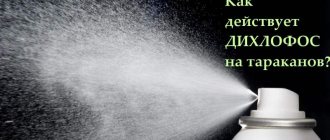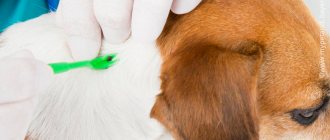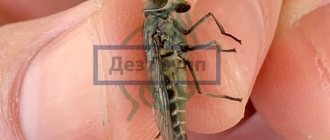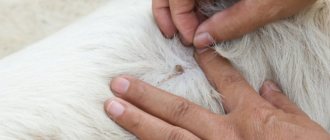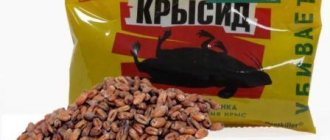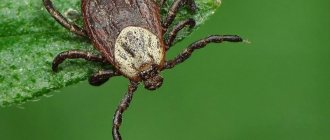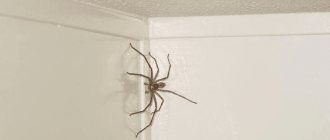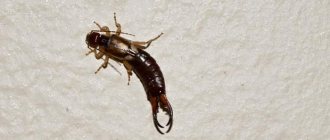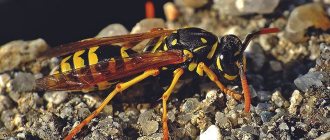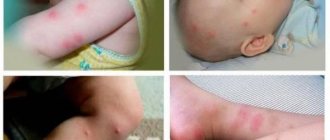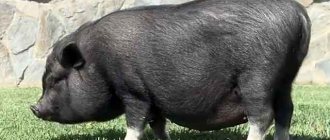Dogs are very inquisitive animals. And this character trait sometimes gets our dogs into trouble. A curious animal, having discovered an unfamiliar substance, may want to taste it. This is where the danger lurks - the substance may well turn out to be poison, and most often animal owners whose pets have tasted rat poison turn to veterinary clinics. Poisoning with this chemical is dangerous and difficult for a dog to tolerate: in the article we will tell you how a dog’s poisoning with rat poison manifests itself symptomatically, and we will find out what measures need to be taken to save the animal.
What is rat poison?
The term “rat poison” combines a group of rodenticides used for deratization purposes.
Russian consumers have access to such drugs as:
- Ratindane;
- Alpha-Naphthylthiourea or Krysid;
- Brodifacoum;
- Warfarin or Zookoumarin.
The drugs mentioned are relatively harmless to humans. The use of more dangerous rodenticides, such as strychnine, zinc phosphide, phosphorus, thallium-based compounds, arsenic and lead, is extremely rare. They are used only by dog hunters who deliberately poison stray cats and dogs.
How does rat poison affect a dog's body?
Anticoagulants, which are part of rat poison, contribute to disruption of the synthesis of phylloquinone, which is responsible for the regulation of blood clotting.
When its own reserves of vitamin K are used up, the poisoned dog develops multiple internal hemorrhages, leading to a quick and painful death. The dog also has damage to the respiratory, cardiovascular and central nervous systems.
Important! Zinc phosphide poisoning is also dangerous for the dog owner. Once in an acidic environment, this compound is transformed into a gaseous state and is easily removed from the body during bloating.
Where can an animal find poison?
Most often, a dog finds poison on the street by swallowing poison-treated bait or eating an infected rodent.
Less commonly, toxins enter the animal's body through scratches and open wounds. This method of poisoning is more typical of puppies, who are often injured during play and love to explore all the objects they find.
The main symptoms and signs of rat poison poisoning in a dog
Signs of rat poison poisoning in a dog depend on the substance used to treat the bait.
When a pet is intoxicated with rodenticides, the following are observed:
- abdominal pain;
- weakness;
- lack of appetite;
- dyspnea;
- traces of blood in the urine;
- hyperthermia;
- bleeding from the anus, nose and gums.
Zinc phosphide poisoning is accompanied by:
- thirst;
- diarrhea;
- fainting;
- convulsions;
- breathing problems;
- severe weakness;
- loss of coordination.
When a dog is poisoned by a rat, the following is observed:
- vomit;
- slow pulse;
- anuria;
- dyspnea;
- pulmonary edema.
Important! Symptoms of rat poison poisoning in a dog can appear one at a time. Therefore, at the slightest suspicion of intoxication, the animal must be urgently taken to the veterinary clinic.
Consequences
Poisoning with rat poison in a mild form and with prompt medical care usually goes away without a trace for dogs. Apart from several days of depressed mood in the animal and lack of appetite.
If the intoxication is significant, complications associated with liver function most often occur. In particular, the liver begins to have problems regulating blood clotting. For this reason, hemorrhages are so common when poisoned by rat poison. If the liver is severely damaged, death is likely.
For preventive purposes, do not let your dog off the leash while walking, especially if you are near old buildings with basements, attics, and warehouses. Read announcements from utility companies and sanitary and epidemiological stations: the time and place of large-scale pest control are usually warned in advance.
We learned what danger rat poison poses to dogs, and what can be done if your pet is poisoned by this substance. Rat poison can not only have a negative impact on the health and well-being of the dog, but can also lead to the death of the animal. To protect your dog from poisoning, take precautions when walking, and immediately take your pet to the clinic at the first signs of intoxication.
Currently reading:
- Seven Signs and Remedies for Getting Rid of Fleas in Dogs
- Thyroid dysfunction in dogs (hypothyroidism)
- What to do if your dog has an abnormal bite
- First aid for a dog if it is poisoned
What to do if your dog has eaten rat poison
In case of rodenticide poisoning, the dog is given emergency care aimed at inhibiting the absorption of the poison and speedy detoxification of the body.
How much time do you have for rescue?
If a dog swallows rat poison bait, he has only 2 hours to save him. After the specified time, toxins affect most of the internal organs, and the probability of a fatal outcome increases to 85%.
First aid
In case of poisoning with rat poison, the dog is given a gastric lavage with a solution made from a glass of heated water and 1 tbsp. l. salt. The liquid is poured into the animal’s mouth with a syringe without a needle, and then lightly pressed on the base of the pet’s tongue to trigger a gag reflex. Experiments with other ingredients, such as medicines, herbs and potassium permanganate solution, can cause burns to the mucous membranes or allergies.
Important! Gastric lavage is prohibited in case of intoxication of unknown etiology, loss of consciousness and gastrointestinal bleeding, which is accompanied by vomiting of black masses and coughing.
To wash the intestines of a dog suffering from rat poison poisoning, give an enema of 50-100 ml of clean water. The procedure is carried out until clean water flows from the anus. A contraindication for performing an enema is the presence of bloody impurities in the excrement.
To prevent dehydration and reduce the concentration of toxins, 5 ml of clean water is poured into the dog’s oral cavity every quarter of an hour.
On a note. Giving your dog a mixture of vodka and raw eggs is only allowed as a last resort. This effective folk remedy provokes numerous consequences, to eliminate which you need to arrive at the veterinary clinic no later than half an hour in advance.
Medicines you need to have in your first aid kit
Every dog owner’s personal first aid kit should contain the following items to provide emergency assistance to an animal affected by rat poison:
- antidote for rodenticide poisoning (Vikasol, solution of copper sulfate or tannin);
- sorbents (activated carbon, Polysorb, Enterosgel or Smecta).
The dosage of drugs is selected taking into account the weight of the dog. If you have doubts about the correctness of the calculations, it is better to consult a veterinarian.
Professional treatment
The dog ate rat poison: treatment for the dog
If poisoned with a small amount of rat poison, gastric lavage, sorbents and laxatives are enough to save the dog. Usually, within a few hours after applying these measures, the dog’s condition returns to normal, and after a few days, the symptoms of intoxication completely disappear.
In difficult cases, the dog is given a blood transfusion and vitamin K is injected subcutaneously. Then the animal is left in the hospital and its well-being is monitored for several days. After administering an antidote, the choice of which depends on the type of toxin, the dog is prescribed symptomatic treatment aimed at eliminating the consequences of poisoning.
In complex therapy, the following are usually used:
- sorbents;
- diuretics;
- antibiotics;
- painkillers;
- corticosteroids;
- heart medications;
- anti-inflammatory;
- salt-based laxatives.
In case of zinc phosphide poisoning, the dog is prescribed Maalox, which helps remove toxins from the body.
In case of severe intoxication, the course of treatment can last up to 30 days, during which the dog is systematically administered an antidote and given a blood transfusion.
Anti-clotting drugs
Anti-clotting agents (LAACs) currently dominate the pest control market.
Mechanism of action. As you might guess, poison prevents blood from clotting. A rat or mouse that eats it ends its life from massive internal bleeding. The same can be said about poisoned dogs. In general, these compounds are completely similar in action (and sometimes in composition) to drugs actively used in medicine (for example, Warfarin (a natural vitamin K antagonist) or Coumadin®). Typically, in the case of dogs, the first symptoms are visible three to five days after poisoning. However, if the dog took a large “dose” at once, clinical signs will appear much earlier.
What not to do if poisoned
In order not to aggravate the condition of a dog suffering from rat poison poisoning, it is prohibited:
- Induce a gag reflex in the animal if more than 3-5 hours have passed since the poisoning. By this point, the contents of the pet’s stomach have managed to get into the intestines and artificially induced vomiting will not only be useless, but will also weaken the body even more. Also, this method cannot be used for convulsions, paralysis and loss of consciousness.
- Give your dog eggs, vegetable oil, milk and castor oil. When in contact with zinc phosphide, they aggravate the negative effects of the poison and contribute to the accelerated release of toxins into the blood.
Important! If a dog is poisoned by rat poison, the pet should not be given strong human medications. First, humans and animals have different dosages. Secondly, it is unknown what reaction will occur when the poison comes into contact with the medicine.
Features of the action
Rat poisons are a whole group of rodenticides that have different compositions and mechanisms of action. In life, pet owners do not very often have to deal with poisoning of their pets, since both dogs and cats sense the poisonous bait and avoid it. However, the animal can be poisoned; the only good thing is that it rarely ends in death. Typically, intoxication is mild or moderate.
The group of rodenticides includes the following substances:
- ethylphenacin;
- warfarin;
- zinc phosphide;
- α-naphthylthiourea;
- bromethalin;
- flocumafen and others.
All substances can be divided into four main groups of toxins based on their mechanism of action.
Warfarin and triphenacin are 1st generation anticoagulants that reduce blood clotting. After eating a poisonous bait, the rat gradually bleeds out, which does not stop because the clotting function is impaired. For dogs, such poisons do not pose any particular danger, however, if internal organs are damaged by foreign objects or a severe overdose, internal bleeding is possible.
2nd generation anticoagulants are more potent toxic substances that can cause the death of a dog. The group includes brodifacoum, bromadiolone. A dose of 3.5 mg of a toxic substance per 1 kg of animal body weight is considered fatal.
Zinc phosphide is considered one of the most toxic rat poisons. Its destructive effect is that it first irritates, then destroys the gastric mucosa, then has a negative effect on the rodent’s nervous system. At higher doses, it has a similar effect on dogs and can even cause paralysis. Deratization work with this type of poison should be carried out only under the supervision of specialists and in compliance with safety precautions.
α-Naphthylthiourea is very toxic, but it is used only where rodent infestation can cause too much damage to production - for example, destroy products. This poison in the form of a gel causes paralysis, swelling of the respiratory tract in rodents, and disrupts heart tone. If the drug is used correctly by deratization service specialists and safety precautions are observed when storing poisons for pets, the risk of poisoning is minimal.
Most often, dog owners turn to the veterinarian with symptoms of pet poisoning with anticoagulants. Since the poison does not begin to act in the body immediately, with timely veterinary care there is a chance to save the animal without serious consequences for health.
Animal restoration
During the recovery period, the animal is recommended to:
- Special food. A dog that has suffered from rat poisoning is kept on a starvation diet for 24-48 hours. Then slimy porridges (oatmeal or rice), boiled vegetables, lean meat broths and fermented milk products with a fat content of up to 1% are introduced into her diet. The dog is fed in small portions 5-6 times a day, and all food is given in ground or liquid form. If the dog eats dry food, he is transferred to a veterinary line designed for animals with diseases of the digestive system.
- Special care and walking. At first, the injured dog can relieve itself on its own, so it is recommended to cover its bed with hygienic diapers. It is also advisable to increase the number of walks and reduce their duration.
During walks, it is recommended to protect the dog from communicating with other people’s pets and not to overload it with physical exercises.
We recommend reading:
- Signs and treatment of piroplasmosis and the danger of ticks for dogs
- Diarrhea and vomiting in dogs
Will mouse bones harm my dog's intestines?
Like most birds, mouse bones are very tiny and will likely be able to fit through without causing any obstruction or perforation. The bones you really need to worry about are the cooked bones. However, it is always wise to be aware of the possibility of a problem occurring. Typically, a blockage occurs when your dog eats something too large to pass through the intestines.
Signs of a blockage include vomiting, diarrhea, changes in appetite, or abdominal pain that lasts more than 24 hours. If you are concerned, contact your veterinarian and they can advise you if any immediate treatment is required.
How to protect an animal from poisoning
The recovered dog becomes more susceptible to repeated poisoning by rat poison and the next time the animal may die.
To protect your pet from potential danger in the form of bait with rodenticides, it is recommended:
- Take a responsible approach to choosing dog walking locations. It is advisable to stay away from food processing plants and city landfills, where pest control is often carried out. It is also recommended to avoid parks, squares and playgrounds where dog hunters usually leave poisonous baits.
- Before going for a walk, put a leash and muzzle on your dog.
- Train your dog. You should not allow your pet to pick up scattered food or take treats from the hands of strangers. If raising your pet on your own does not bring the desired results, it is better to use the services of a professional.
Important! When baiting rodents yourself, it is recommended to store poisons so that the dog cannot reach them.
Precautionary measures
Unfortunately, in this case it is impossible to guarantee that your pet is completely safe. He can encounter poison anywhere. Try to walk with your dog, be sure to put a muzzle on it, and do not let it off the leash in places where cases of poisoning of pets have already been recorded.
Carefully follow the announcements of the local sanitary and epidemiological station: if they include rodent control, it is generally better to avoid walking with your dog. The consequences of poisoning are more severe after a week spent at home or in an enclosure.
